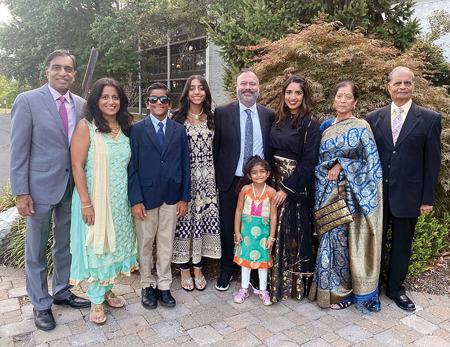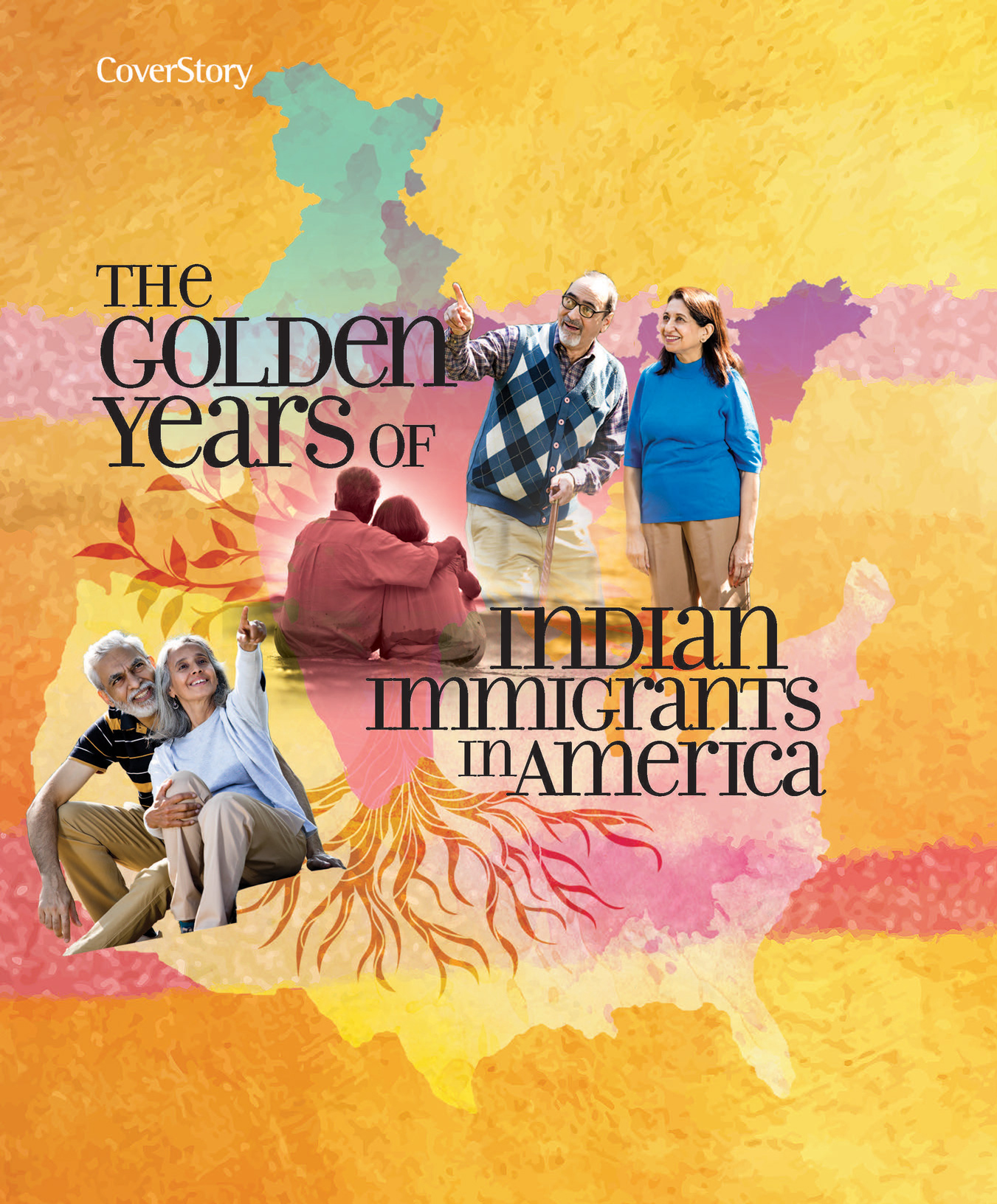
Retirement Living
Final Destination:
Last Stop on the Indian Immigrant Journey in America
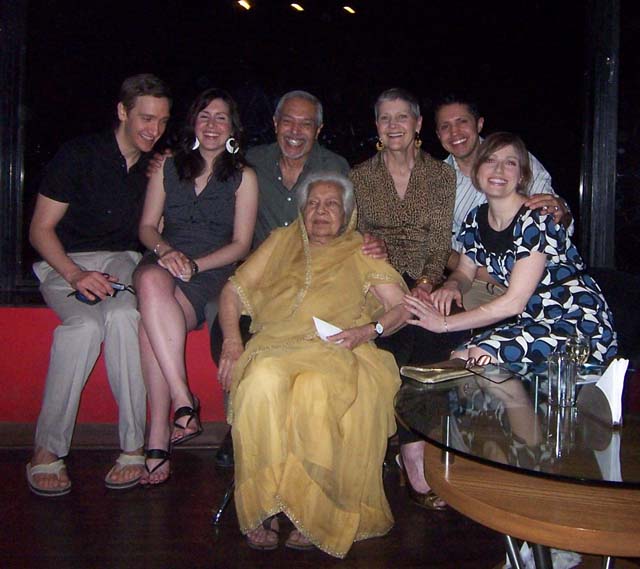
Over 300,000 Indian seniors long for their cultural roots in their sunset years.
Will they find them in a changing America?
[dropcap]T[/dropcap]hey left their homeland of India in their 20’s and 30’s, embarking on education and business ventures. They came to a new world on Air India, with jars of grandma’s green mango pickles and many memories stashed away in their suitcases. After incredible struggle and often incredible success in America for 40-plus years, they now have children and grandchildren of their own and a full life. They are now nearing their Final Act – where do they go now?
The Indian-Americans are part of the fastest growing and wealthiest community in America and number over 4.8 million in America. A full 12 percent of them are immigrants who have had a foot in two continents all their lives – embracing America as their adopted homeland but never severing the umbilical cord with India. Now as age catches up, choices will have to be made as travel and independence become more precarious to aging bodies in their increasingly shrinking world.
It is strange how immigrants start out by going on a journey, and now towards the end of their lives, they are still taking journeys, still trying to find the final place they’d like to be.
Of course, not everyone has the ability to take journeys or have options to choose from. The Indian-Americans are not a homogenous group and their life circumstances can depend greatly on their station in life and their income. The life of an IT professional or a physician will be very different from that of a 711 worker or taxi driver – even if they come from the same town in India. COVID 19 has further exacerbated the differences in their lives, and racism, casteism/class and invisibility have often been factors in the way their lives have panned out. Those at the bottom of the ladder will age in place or turn to public assistance.
Retirement Living – Snapshots from a Reverse Journey
[dropcap]T[/dropcap]he ones who have choices are faced with the decision on where to move and why. Many are taking smaller journeys by downsizing from the big homes in the suburbs to smaller, more manageable ones; some are moving to neighborhoods which are closer to their children and grandchildren; some even move in with them but more and more this new breed of retirees values their own independence and wants to continue to live a life of autonomy, either on their own or in retirement homes.
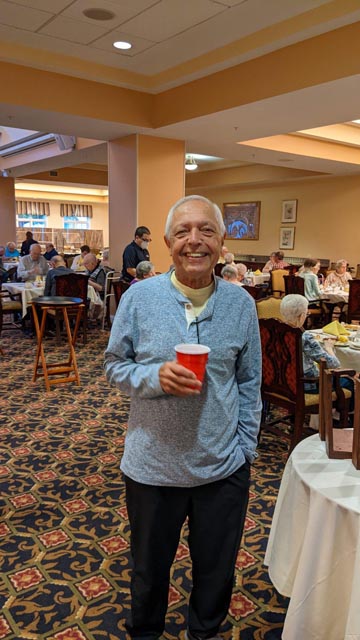
Meet Jyotin Sachdev, who came in the 60’s and has now totally acclimatized to America. When he first came to the US there were hardly 30 Indian immigrants in Lehigh, PA where he settled. He came directly from IIT Bombay, Class of 68, to Lehigh University. He was born in Pakistan before the partition and has Bollywood roots since his mother is Achala Sachdev, one of the loved screen mothers of Hindi cinema.
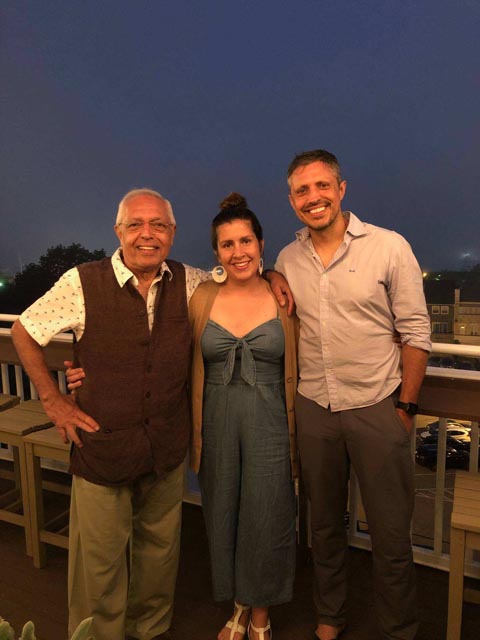
He says, “I’m different in that I was an only child and pretty independent.” His adult son and daughter live near Boston and Philadelphia respectively and he has an active lifestyle since he’s into kayaking, canoeing, biking and tennis. When he looked at retirement options, he found most Indians seemed to be moving to Tampa as many of them had been in the hotel/motel business, retail or the medical profession.
“I looked at the Indian community just very peripherally, just out of curiosity and I said, “I’ll be again putting myself into a slot. I’m a guy you can’t pigeonhole and I don’t like the conventional path. It’s just not for me. And so ultimately, I did some research and found this community -The Moravian Village.”
This little gem, which most Indian-Americans don’t know about, was founded in 1741 in the heart of Bethlehem, Pennsylvania, by missionaries from Moravia and Bohemia. It’s a continuing care retirement community on 37 acres which transitions to whatever are your needs as you step into the senior years. “We provide unparalleled facilities and financial advantages with a unique focus on our core values: Freedom, Friendship and Health” states their website. Historic Moravian Bethlehem, which is a candidate for UNESCO World Heritage site status, founded the first boarding school for girls in the original 13 colonies, the nation’s oldest pharmacy, the first hospital and even America’s oldest book shop.
Jyotin Sachdev admires the rich craftsman skills this community brought to Bethlehem, as they are still known for their handicrafts and music and the area is a small tourist attraction. Moravian Village has three kinds of residential communities; one side is beautifully landscaped 55-plus community cottage homes, independent apartment complex as well as assisted care living in the Healthcare Center. There is also a library, gym, sauna, dining facility and two restaurants. A big garden showcases open-air movies and hosts musicians.
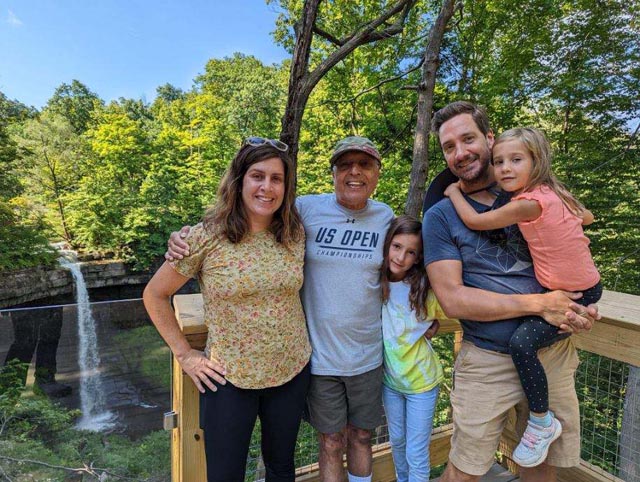
[dropcap]A[/dropcap]t 76, Jyotin is among the younger residents and Moravian Village has facilities for all needs, going up to those who are in their 90’s and who need 24/7 care or assistance with dementia or Alzheimer’s. He has an active life style and visits art galleries and amazing restaurants in the nearby downtown which has the City Hall. “Everything is within 15 minutes, every cuisine, you name it. I could walk there but I take my bike.”
Money Magazine listed Bethlehem as one of America’s top cities to live in and it has certainly transformed over the years. “The Lehigh River is a very strong part of the psyche out here and the river plays an important part. It’s like 200 yards from where I live and I can see it from my balcony.”
The city offers so many activities and is also close enough to New York to make frequent trips to friends there or to his children. For Jyotin who is a tennis enthusiast, he plays tennis three times a week, coaches tennis and has a large tennis community. There are opportunities to learn new things from glass sculpture to photography in the dynamic city. He says, “I know I’m moving in different circles – but that it’s all one big circle. Yeah – I love it – I’m really happy.”
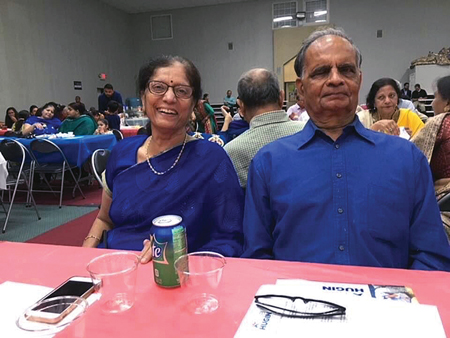
In India without Going to India
[dropcap]A[/dropcap]s American populations age, public and private partnerships are creating senior citizen living centers, many targeting retirees from the sub-continent by introducing the Indian flavor to the living environment. Several states now offer alternate senior centers with Indian food, yoga, Bollywood cinema, a celebration of all cultural festivals and access to people of similar backgrounds. These include retirement homes like Priya Living, and Shantiniketan USA where you can travel to India without actually boarding a plane.
Jayant and Anjana Gusani are strong proponents for Shantinektan in Florida and have found their ideal home away from home. An immigrant from Rajkot, Gujarat Jayant worked for Boeing for 24 years and later with United Technology for seven years. He and Anjana, who was a pharmacist, reared two children and spent many fulfilling years in New Jersey.
“We lived in Cherry Hill for 33 years. This is where our children grew up and got settled in their own lives after their education and weddings,” he recalls. “And when only the two of us were left at home, we thought if our life was more active, we’d feel better.” Shantinekan, with the warm Florida weather and access to like-minded seniors seemed the best solution.
[dropcap]I[/dropcap]ndeed, it gives them the best of all worlds because they are close enough to their children and grandchildren but are able to have independent, meaningful lives with friends of their own age and daily social interactions. This first phase of Shantinektan development is hugely popular and sold out a long time ago and whenever there are any vacancies they get quickly filled as friends or relatives spread the word of mouth. Phase 3 of the development is still open and people can still buy there.
For the Gusanis, it is the perfect way to spend their retirement years with activities they care about and food that is totally to their liking. All food at Shantinekatn is vegetarian and the variety cuts across the regions of India with North Indian and South Indian dishes being offered, with additions like pizza and Mexican too. Lunch is usually a big meal while dinner is a lighter one. The monthly cost of meals is $340 a person per month, and these are a big time-saver for retirees who no longer have to shop and prepare and cook. This is something Anjana really loves as during her pharmacist career she had to be the one to cook all meals: “We needed to put so much effort into preparing the meals. Now we eat there or bring it home. I now have a chance to do my art and crafts. I have a chance to do my karaoke. I like to sing and we have bhajans every Sunday.”
While Shantiniketan is not an assisted living facility there is a general hospital nearby and there are at least 13 or 14 retired physicians living there who often give seminars on health. In the surrounding area there are many physicians’ offices, nursing homes and physical therapy facilities. Along with that there are grocery stores, places of worship and drugstores making Shantiniketan central to their daily lives.
[dropcap]T[/dropcap]he immigrants who left home to come to a new country feel this is the best way to go, for they too have changed with their interaction with America. “We cannot go back to India and get very well adjusted,” says Jayant Gusani. “ We could have done it in our 50’s and 60’s. Somehow we lose our immunity and we cannot now support our health requirements there. You know, we had the idea to go back some time – but that time never came. Now it’s not possible. We cannot break up everything and start all over, like we used to be able to do in the early days. We have lost that.”
Actually they gained financial stability, children, grandchildren and a rich life in their immigrant journey. They have the bonus of frequent visits to their children’s homes as well as celebrations and weddings to share.
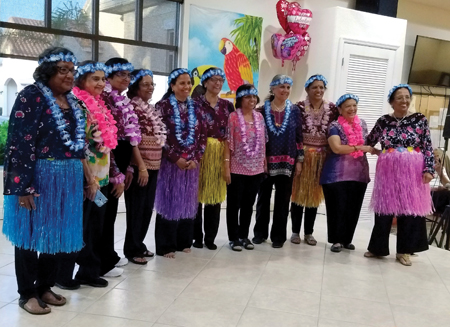
[dropcap]P[/dropcap]erhaps the biggest gain is the fulfilling independent life they have with peers of their own age, and many new friends. They have lived in Shantiniketan for six years and have found many long-term friendships, celebrating spiritual and cultural events together, especially festivals from different parts of India. Anjana is enthusiastic about Super Saturdays when the residents present entertainment with songs and dance items and there are also yoga classes and karaoke evenings. There is so much activity that the days are quite full with cinema, television, yoga and bridge sessions and table tennis.
The main asset is a community of their own – if there is any sadness or something bad happens, there are people who know you. Says Anjana, “Some people have lost their partners and are alone and people are very supportive of them. We are like friends, like close family. We are all willing to help each other.”
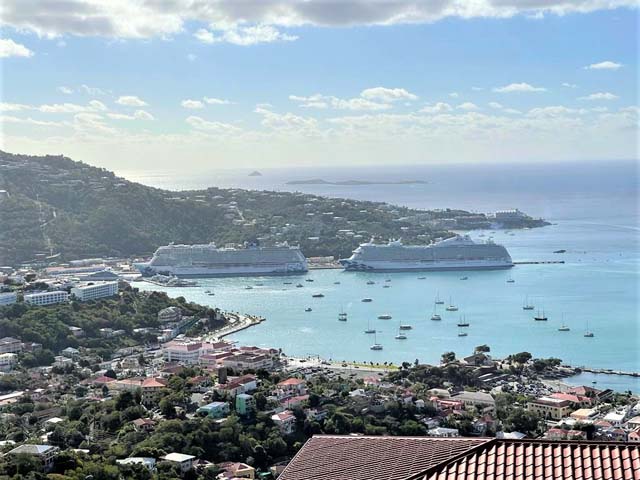
Indeed, in their retirement years, people who have spent their entire lives commuting and working and struggling want to be in a place which is really and truly home and which is close to everything that matters to them. Sometimes, this literally means going back to their roots, back to the place where they started their immigrant journey.
Full circle back to India.
A decade ago Indian-Americans on the cusp of retirement did not have options in India but with the burgeoning population of elderly, of left-behind parents of NRI sons and daughters, it has also become part of an attractive market for senior care.
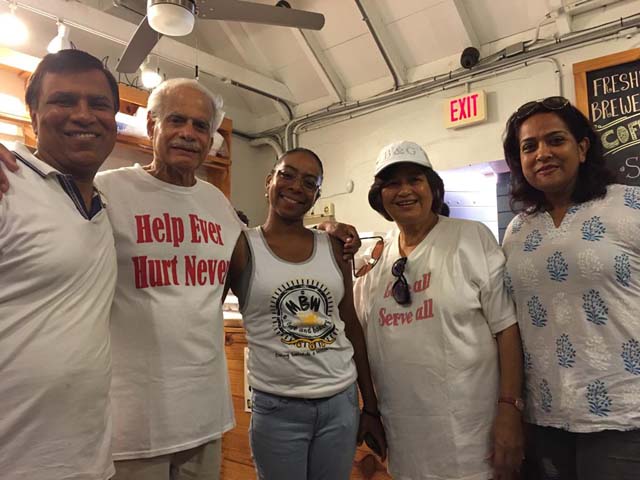
[dropcap]L[/dropcap]al and Jayashree Sakhrani, are now making this reverse journey back home. Having spent 40 years in the beautiful island of St. Thomas, in the Virgin Islands, Lal, a jeweler who sold diamond jewelry wholesale to the stores catering to the countless tourists, is calling it a day. Strong devotees of Satya Sai Baba, they have visited Puttaparthi many times and are also lead volunteers in the Satya Sai organization in St. Thomas which provided assistance to the needy during the hurricanes Irma and Maria.
Lal Sakhrani was president of the Indian Association of St. Thomas for a number of years and hosted many visiting ambassadors including K.R. Narayanan, who later became President of India. Lal helped build the Cultural Center in 1999 and it now runs six days a week and conducts bhajan gatherings and children’s classes. Lal and Jayshree were both key part of the thriving Sindhi and Indian community in St. Thomas and it is hard to leave all that behind.
But the Sakhranis, who do not have children, are excited to be finally closer to siblings and their large extended family in India, as well as the many friends they had left behind. They have bought a beautiful apartment in a luxury complex in Pune, which is just a two hour drive to Mumbai and where Indian friends from all over the world return to the homeland like migrating birds in winter.
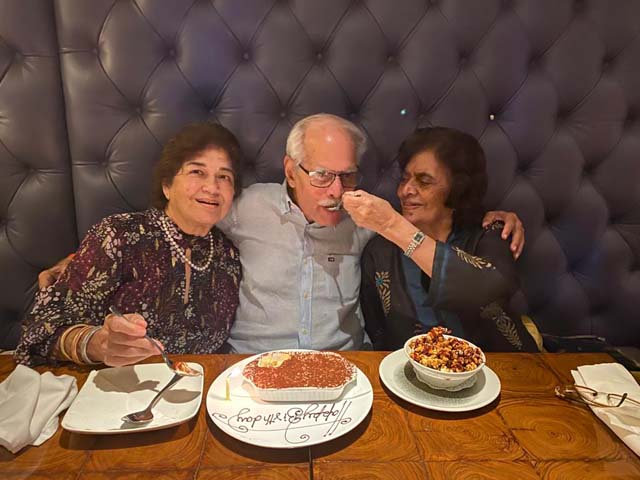
All their belongings have been shipped to India, and the Sakhranis are now in Miami, on the first leg of their return journey to Mumbai and their roots. I just received a WhatsApp message from them, now actually in Mumbai, India. There are photos of them enjoying a lunch at a restaurant with Lal’s only sibling Durga and they all look delighted to be back in the homeland.
Another retiree, Manu Mahtani has managed to have his cake and eat it too. He has bought a beautiful home in Pune to be close to his roots but also wants to be close to his adult children who both live in New York. The solution is a gorgeous home in Orlando, Florida where his lawyer son and his physician daughter can both visit with their little children. It is called Paradise and Mahtani says it is. This vast gated community has many Indian residents from many parts of India. He says, “You know we see so many Indians. I say they all came with the same dream and the same hand pulled us all together.”
[dropcap]T[/dropcap]he Mahtanis, who are Sindhis, have made good friends with Ismailis to Maharasthrians to Gujaratis and South Indians. In their past lives these people were busy doctors, lawyers and IT professionals – now all are retired and happy to relax and socialize. There are also 250 Sindhi families in the area, from Daytona to St. Petersburg. Many of these new friends are within walking distance and they often walk with each other around the main lake or catch up in the clubhouse. Says Manu, “It’s a very good way and you can grow old together.”
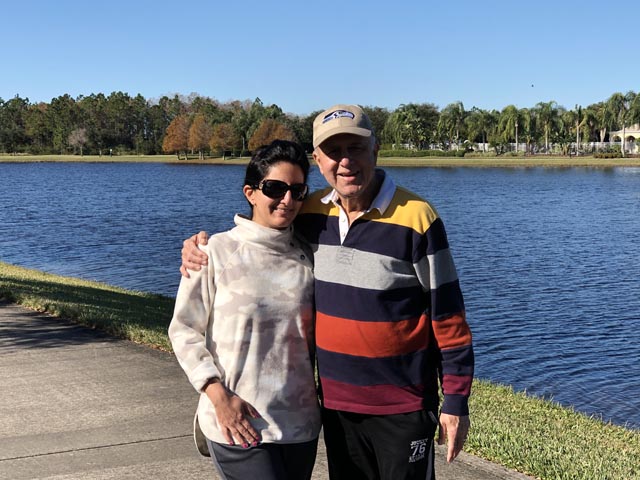
So while the Florida home is essential to being close to their grown children and grandchildren in New York, it also offers them great warm climate and new friends. For their connection with the past they travel for four months in winter to their apartment in Pune because it re-connects them with so many friends with whom they had lost touch over the years. Sindhis, who started out as refugees from Sindh during Partition, have become seasoned traders and travelers and are settled all over the world but they often come back to their roots which are often in Bombay and Poona, now of course known as Mumbai and Pune.
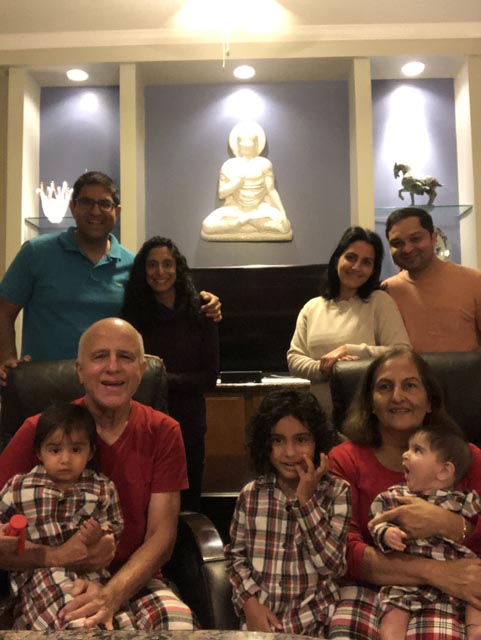
[dropcap]S[/dropcap]ays Manu, “You don’t realize how many NRI ‘s are coming and settling now permanently in India because we are all getting old and we all want to go back to a place where we can get together and find a group. It’s really a wow factor when you re-connect with people you haven’t seen in 30, 40 – even 50 years!”
Then there are some Indian-Americans who love both countries and lifestyles so much that they still can’t decide which should be their future home. Gautam and Nita Advani came to America in the 60’s so have roots both here and in India. They plan to shuttle between their lovely co-op on Roosevelt Island, NYC and the family home in Mumbai’s Malabar Hill inherited, with his brother, from his parents.
Indeed, entrepreneurship and travel seems to run in their genes. Nita’s grand-dad founded Bombay’s Jai Hind College after the Partition and Gautam’s merchant navy captain dad was the 1st or 2nd native Indian to get command of a merchant vessel, early in WW2. He subsequently came ashore, finally returning to sea after retirement; His grand-dad had designed & supervised construction of large parts of the Sukkur Barrage (Indus River), the world’s most complex project in the 1920s
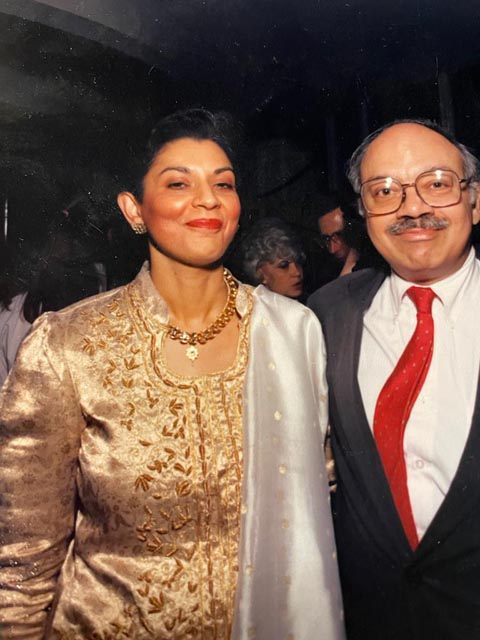
[dropcap]G[/dropcap]autam, who attended The Lawrence School, Lovedale (Niligiris), IIT-Bombay, and MIT, was America’s 2nd ethnic Indian investment banker. He was hired right out of business school by Fred Joseph, who was later Chairman of Drexel Burham Lambert. He spent 19+ yrs at Sandy Weill’s firm, when it was on a spree, going from Shearson Hammill to Shearson Lehman (with other names in between), by acquiring 20+ competitors, growing from 250 to over 49,000 employees and becoming the world’s 2nd largest financial services company.
Gautam calls it “one of the most exhilarating periods of change in American finance”, especially with several of the leading lights of the financial world as direct bosses or colleagues – to name a few, Sandy Weil later became president of American Express and CEO of Citi; Arthur Levitt Jr. later became the Chairman of SEC and Wick Simmons became NASDAQ chairman. Plus all of Lehman Brothers was acquired in 1984!
Says Gautam: “ I’d also created a small group that operated as consultants to the firm’s 100 senior-most managers – nimble, accessible, knowledgeable about the industry AND way cheaper than Mckinsey type firms.”
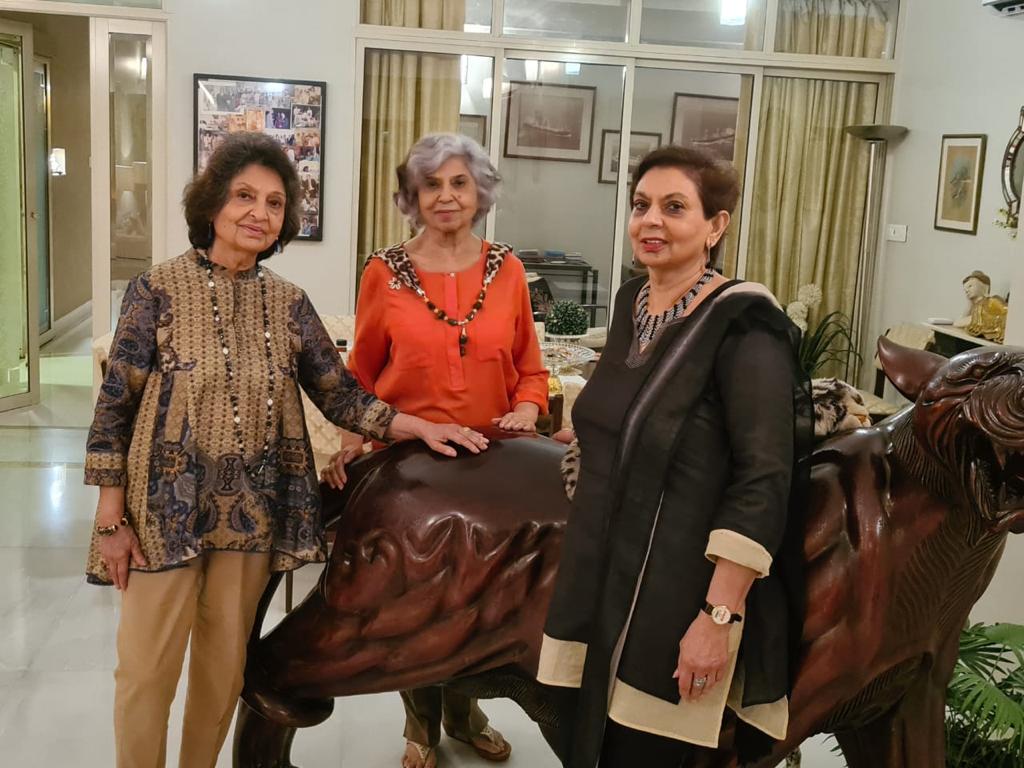
[dropcap]S[/dropcap]o while he was invested heavily in the financial world, Nita, a lifelong Mumbaikar-Bombayite, who had attended Walsingham School, then Elphinsone College came to New York and entered a field which was just starting – the group tour business. She has traveled extensively and believes travel is in her blood.
In Mumbai, their home comes with a magical family cook (hired by his mom) who whips up parathas and home-cooked meals easily & happily! A beautician even makes house-calls, not uncommon in India. Says Nita, “My two sisters live in the same building nearby, we meet often and have outings with friends.” Their extended family of nieces, nephews and cousins is a big attraction with many family get-togethers in one family home or another.
As longtime New Yorkers, the decision to choose between NYC and Mumbai is difficult. While India has the allure of extended family and extensive domestic help, America offers superior medical care – for retirees, no American health-care coverage extends outside the US. On the flip side, India health insurance does not cover doctor visits, but does cover hospital visits & surgeries. So the debate to move or not is perplexing – they seek the best of both worlds, flying back and forth.
“The pangs of distance and separation begin after 5 to 8 months so Covid was stressful!” says Nita. “Stay too long in one city, you pine for the other. In NewYork, you hunger for desi music, food, sounds, smells; in Bombay, western music, movies and food can be nice and spicy too these days, India-genized!”
As they fly between India and America, Gautam admits he still dislikes the exchange rate – it was under Rs. 4 to the US dollar when he arrived in America in the early 1970’s – it is now Rs. 83 plus! Yet he says, speaking for many immigrants like himself and Nita, “We can’t help but feel blessed for having a foot in two of the greatest nations and cities of the day”

So whether Indian-American retirees settle in America, in India or see-saw between the two countries, they are still actively trying to connect, find meaning and have new adventures – even in old places. For these seasoned immigrants and risk-takers, life is still very much of an anticipated surprise package.
Who knows what the future holds?
(C) Lavina Melwani
(This article was written with the support of a journalism fellowship from The Gerontological Society of America, The Journalists Network on Generations, and the Silver Century Foundation. This first appeared as the cover story in Khabar, an award-winning magazine in Atlanta, GA. www.khabar.com)

